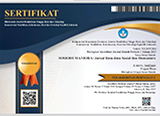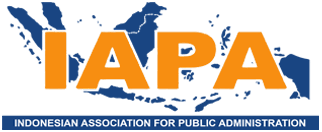ARCHITECTURAL DESIGN AND WOODEN SRUCTURES OF TRADITIONAL OGAN ILIR BUILDINGS AS THE LOCAL CULTURAL WEALTH OF THE OGAN ILIR COMMUNITY.
Abstract
South Sumatra has a lot of traditional houses across its region. Each house has its own characteristics. One notable design is houses built on stilts. In Ogan Ilir, especially Tanjung Batu, it is famous for the production of knock-down houses. Knock-down houses in Tanjung Batu are a stilt house with an architectural design that almost resembles a Limas house, only that these knock-down houses are specially designed to make it easy to disassemble and reassemble them elsewhere. This study aims to give a closer look at the design, structure and wood choices of knock-down houses that have become unique, cultural houses of Ogan Ilir people. This study will look at how the architectural design of the houses’ characteristics and wooden structures are adapted to the surrounding environment. This study was conducted qualitatively with an anthropological approach through ethnological techniques. To dig up information about knock-down houses, this was done through observation and data collection by conducting interviews and collecting written data such as journals and articles related to the topic. Observations and interviews were carried out in Tanjung Batu, which is the center for knock-down house craftsmen. The results obtained in this study are: (a) the daily activities of carpenters in the manufacture of knock-down houses, (b) tools and materials used in the construction of the knock-down houses, (c) sales of knock-down houses, (d) the development of wood tools and materials following the development of increasingly sophisticated technology, and (e) information about knock-down houses as a local, cultural building typical of Ogan Ilir.
Keywords
Full Text:
PDFReferences
Abbas, I. (2013). Pappaseng: Kearifan Lokal Manusia Bugis Yang Terlupakan. Sosiohumaniora, 15(3), 272.
Abbas, I. (2014). Memahami Metodologi Sejarah antara teori dan Praktek. Jurnal Etnohistory:univesritas Khairun. 1 (1), 36.
Alian, A. (2012). Metodologi Sejarah dan Implementasi dalam Penelitian. Jurnal Pendidikan dan Kajian Sejarah (Criksetra), 2(2).
Banda, M.M. (2016). Upaya Kearifan Lokal dalam Menghadapi Tantangan Perubahan Kebudayaan. 55, 21–22.
Fitry, A.D., Siswanto, A. & Teddy, L. (2020). Kajian Struktur Pada Arsitektur Rumah Tradisional Terhadap Potensi Bencana Di Sumatera Selatan. Applicable Innovation of Engineering and Science Research (AVoER), November, 363–367.
Harto, S., Sidiq, R.S.S. & Karneli, O. (2021). Development Strategy Mangrove Ecotourism Based on Local Wisdom. Sosiohumaniora, 23(1), 115.
Iskandar, Y. & Lahji, K. (2010). Kearifan Lokal dalam Penyelesaian Struktur dan Konstruksi Rumah Rakit di Sungai Musi Palembang. Jurnal Ilmiah Online Local Wisdom, II(2), 37–45.
Mansyur, M. (1985). Arsitektur Tradisional Daearah Sumatera Selatan. Penerbit:Direktorat Jendral Kebudayaan
Njatrijani, R. (2018). 3580-10649-3-Pb. Gema Keadilan, 5(September), 16–31.
Sanara, T. (2018). Penilaian Risiko Kesehatan Kerja Pembuatan Rumah Bongkar Pasang (Knock Down) Di Desa Tanjung Batu Seberang Kabupaten Ogan Ilir 2018 Skripsi.
Saragih, Z. (2011). Analisis produksi dan nilai tambah pada industri rumah bongkar pasang di Ogan Ilir. Universitas Sriwijaya
Siswanto, A. (2004). Studi Pengembangan Konstruksi Rumah Kayu Sistem Bongkar Pasang Berdasarkan Konsep Struktur Kayu Tradisional Sumatera Selatan The Study of Knock Down Timber Construction House Based on the Concept of South Sumatra Timber House Structure. Jurnal Ilmu & Teknologi Kayu Tropis, 2(2), 103–109.
Siswanto, A. (2009). Kearifan Lokal Arsitektur Tradisional Sumatera Selatan Bagi Pembangunan Lingkungan Binaan. Local Wisdom: Jurnal Ilmiah Kajian Kearifan Lokal, 1(1), 37–45.
Siswanto, A. (2020). Kajian Awal Keaslian Struktur dari arsitektur tradisional di Sumatera Selatan. Seminar Ikatan Peneliti Lingkungan Binaan Indonesia:Universitas
Syarifuddin. (2021). Perkembangan Tari Seinggok Sepemunyian Sebagai Simbol Akulturasi Budaya di Kota Prabumulih Tahun 2006-2019. Historia:Jurnal Program Studi Pendidikan Sejarah. 9(2)
Vuspitasari, B.K., & Ewid, A.E. (2020). Peran Kearifan Lokal Kuma Dalam Mendukung Ekonomi Keluarga Perempuan Dayak Banyadu. Sosiohumaniora, 22(1), 26–35. 8
Wasino, M. & Endah S.H. (2018). Metode Penelitian Sejarah: dari Riset hingga Penulisan.
Wijaya, A. A., Syarifuddin, S., & Dhita, A. N. (2021). Nilai-Nilai Kearifan Lokal Rumah Adat Kajang Lako di Jambi. Criksetra: Jurnal Pendidikan Sejarah, 10(1), 60–69.
Wulansari, C .D. (2013). Sosiologi:Konsep dan Teori. Refika Aditama
DOI: https://doi.org/10.24198/sosiohumaniora.v24i2.36893
Refbacks
- There are currently no refbacks.
Copyright (c) 2022 Sosiohumaniora

This work is licensed under a Creative Commons Attribution-ShareAlike 4.0 International License.
Sosiohumaniora Indexed By:
 Creation is distributed below Creative Commons Attribution-ShareAlike 4.0 International License.
Creation is distributed below Creative Commons Attribution-ShareAlike 4.0 International License.
Published By:
Faculty of Social and Political Sciences, Universitas Padjadjaran
Dean's Building 2nd Floor, Jalan Ir. Soekarno Km. 21 Jatinangor, Sumedang 45363
Email: jurnal.sosiohumaniorafisip@gmail.com
















